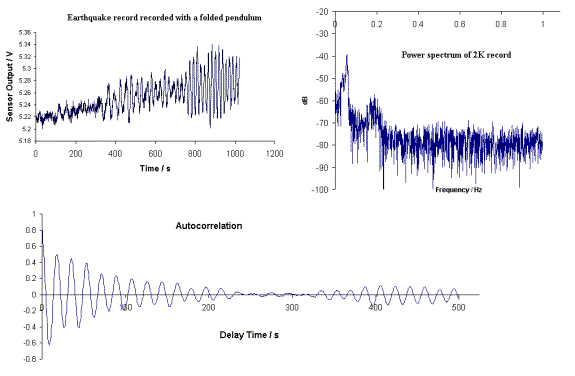
PHYSICS SEMINAR
Randall
D. Peters
Department of Physics
Mercer University
Wednesday,
January 14, 2004
Willet Science Center 101
"Sophisticated Spreadsheet Digital Data Processing"
Abstract: The modern computer could not have developed without solid state electronics. Similarly, many algorithms that have become essential to modern computing would not be feasible without the fast Fourier transform, which 'makes technology fly' [1,2]. The well-known-to-the-public 'computer enhanced images', as will no doubt be generated using raw data from the latest Mars rover--rely on complex algebraic FFT operations based in the convolution theorem. Even the great 20th century invention of MRI relies on such calculations. Although such operations have greatly impacted the 2-dimensional world of imagery (including the compression schemes used to produce popular photographic jpeg's) similar powerful analysis of 1-dimensional time records are lagging way behind. This may exist, in part, because of unwarranted attention to steady state calculations involving poles and zeros (Laplace transform treatment). Whereas the existing 1-D filter world of digital signal processing (DSP) does routinely use windows (such as the Hanning) to provide apodization (to reduce artifacts due to the Gibb's effect), surprisingly few have discovered the powerful kernels of Green's function type that are based on the Gaussian function. In this presentation using Excel, the power of the spreadsheet will be illustrated, first as a means to improve intuitive understanding of digital techniques. Examples will include autocorrelation and various filters, including 'smoothed' derivatives obtained from the product of a Hermite polynomial with a Gaussian. Not only is the spreadsheet pedagogically useful, but its potential importance for practical applications will also be demonstrated, as illustrated in the attached figure. Figures of similar type were generated during oscillator damping studies, the results of which will be part of an engineering handbook [3].[1]
Barry Cipra, "The FFT: Making Technology Fly", SIAM News, Vol. 26, No.
3, May 1993--online at http://www.siam.org/siamnews/mtc/mtc593.htm
[2]
R. Peters, "Graphical explanation for the speed of the Fast Fourier
Transform", online at http://arxiv.org/html/math.HO/0302212
[3]
"Damping" (chapter), Handbook
of Vibration and Shock, ed. Clarence deSilva, to be published by CRC.

Please
join us for light refreshments outside WSC 109 at 4:15.